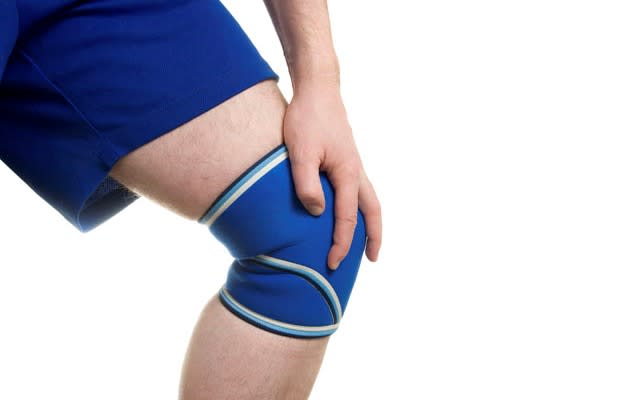Sports Braces: Which is Best for Your Knee or Ankle?
Braces: Which is Best for Your Knee or Ankle?

A brace is an external support that protects the joints and ligaments to prevent injury and to support injured individuals as they resume physical activities.
There are braces for various joints such as the elbow, shoulder, knee, ankle, back and wrist. The most common braces are readily available from any pharmacy. However, for more elaborate and specific braces, you will need to order online or purchase through medical supply companies. Some customised braces need to be prescribed by a doctor.
Let’s explore in greater detail knee and ankle braces.
Related video: What does RICE have to do with a sprained ankle?
What are the types of braces commonly used for the lower limbs?
Broadly, braces can be sub-divided into the following categories based on the intended purpose of the brace.
1. Prophylactic (preventive) braces
These are used to prevent injuries or to reduce the severity of injury during sports. There is limited evidence to support prophylactic use of braces.
2. Rehabilitation braces (immobiliser)
A doctor might prescribe a brace to an individual who has recently had injury or surgery. Such braces aim to protect the injured area whilst allowing a certain range of motion. The brace is usually worn for a period of time as instructed by the doctor. Rehabilitation (e.g. physiotherapy management with modalities and/or exercises) is usually commenced alongside the use of the rehabilitation brace.
3. Functional braces
These are used to support an unstable joint in a bid to prevent re-injury. For example, functional braces may be suitable for patients who have had an anterior cruciate ligament (ACL) tear or patients who have undergone ACL reconstruction and would like an external brace to protect the ACL graft whilst returning to sports.
A semi-rigid lace-up brace may be used for protection against recurrent ankle sprains during sports. For sports with more landing impact from jumps, a rigid (lace-up or stirrup) brace is more suitable. These braces will allow upward and downward movements of the ankle but will restrict inward or outward movements.
Related article: 4 common ligament and tendon injuries explained
4. Other types of braces
The braces mentioned above mainly target to support joints with ligamentous injury. Other types of braces include:
Offload braces
An offload brace may be used for knee osteoarthritis predominantly present in one out of the three compartments of the knee. The brace may alleviate the pain or pressure associated with the degenerated compartment of the knee.
An offload walker may be prescribed by the attending doctor in the case of a bone, ligament or tendon injury in the ankle. It allows some weight-bearing whilst providing some support and protection for the injured tissues.Patella tendon brace and patella stabiliser brace (patella refers to the knee cap bone)
A patella tendon brace (knee strap) is used to support and re-distribute the forces that go through the patella tendon. It’s commonly used for conditions such as “jumper’s knee”.
A patella stabiliser brace is used to reduce compression of the knee cap bone and to prevent it from excessively shifting outward. It’s commonly used for conditions such as anterior knee pain and patella subluxation/dislocation and patellofemoral pain syndrome.Compression bandage, ankle guards, knee guards and arthropads
These are soft guards/sleeves with an elastic component. They are used to provide some compression and reduce swelling.
Related article: Pros and cons of using knee or ankle braces
Get more health tips at HealthXchange.com.sg and sign up for our FREE e-newsletter.
Article written by Esther Lan, Senior Physiotherapist, and Pauline Khoo, Physiotherapist, Department of Physiotherapy, Singapore General Hospital (SGH), a member of the SingHealth group, for HealthXchange.
Articles on HealthXchange.com.sg are meant for informational purposes only and cannot replace professional surgical, medical or health advice, examination, diagnosis, or treatment.

